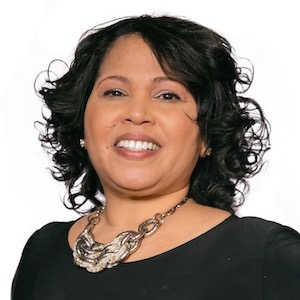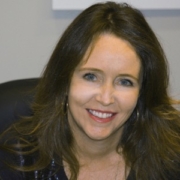Promoting CEO-Ready Women
By Melissa J. Anderson

Image via Shutterstock
Companies must work harder to nurture the pipeline of diverse CEO-ready leaders, experts say. As the number of women CEOs dwindles, it seems that there are few female leaders ready to take their place, or, rather, that there are too few companies ready and willing to give them a shot.
Indeed, the percentage of female CEOs in the S&P 500 dropped to a miniscule 4.4% in 2016, down from a slightly less miniscule 4.6% last year, according to data from Catalyst.
Additionally, high-profile female CEOs have stepped down from their roles in the past year. For example, Xerox’s Ursula Burns announced this summer that she will leave the company after its planned split is completed later this year. DuPont’s Ellen Kullman retired after the company’s bruising proxy battle last fall. And it’s not clear where Marissa Mayer will land after Verizon takes over Yahoo’s core businesses. Because there are already so few women in the CEO position, the loss of one or two makes a big difference. And the bright spots — like Shira Goodman being named interim CEO of Staples in June — are few and far between.
It’s not clear that companies are doing enough to bring diversity into the C-suite, says Brande Stellings, Vice President of Corporate Board Services at Catalyst. Moreover, the work is hard and constant — if companies lose focus on diversity, they could wind up dashing any positive work they’d achieved.
“Ensuring both diversity and inclusion at leadership levels requires constant attention and intention – as does any behavior until it becomes a habit,” says Stellings. “Change is not happening quickly enough and leadership at the board level and in the C-suite does not reflect the world we live in today, where women represent half of the workforce.”
Companies must be intentional in their efforts, says Stellings.
“Set a target for representation of women in the C-Suite and reverse engineer from that target,” she says. Stellings suggests companies focus on a couple key areas to reach that target: “hot jobs” and sponsorship.
“Review the ‘hot jobs’ in the company that provide a fast track for executive development: are women getting their fair share of those opportunities?” she says.
For example, the gender diversity of PwC’s Global Leadership Team increased significantly this year, moving from 20% female to 42% female with the appointments of the company’s new global chairman Bob Moritz.
“Getting there was part of a long journey which we are still on,” says Dale Meikle, Global Diversity and Inclusion Program Office Leader at PwC.
“This has been the result of many years of our top leadership personally sponsoring diversity as a business imperative, of ensuring that along with male talent, female talent has been identified and developed to create a more gender diverse slate of leaders when vacancies come up; it’s also been challenging ourselves to not make assumptions about what the barriers to diversity are, but rather letting the data lead us,” Meikle says.
According to Meikle, PwC’s creation of data-driven diversity programs that are tied to leadership accountability have produced a “sea change” at PwC.
As for sponsorship, Stellings tells of one S&P 500 CEO who asked his senior leadership team to make a list of people whose careers they had championed, and then to ask whether any of the people they had supported looked different from themselves. If not, he challenged the team to do something about it.
Stellings says women executives can play a key part of corporate efforts to bring more women and people of color into the CEO-pipeline. Not only are women executives necessary to mentor and sponsor the next generation of diverse leaders, but they are integral in driving the cultural infrastructure needed to help them thrive at work.
“On an organizational level, [senior executive women] can ensure that the business case for advancing women’s leadership is well understood, both in terms of winning in the marketplace for talent and in the marketplace for customers,” says Stellings.
For female executives who already have their eyes on the CEO job, Stellings says, an outside board seat can raise their profile and offer experience that CEO-search committees view as valuable. They should know what their CEO would say about them, and ask him or her to make introductions to search firms or other directors on their behalf.
“They should also take advantage of opportunities to present to, work with and socialize with their own company’s board,” she adds.
What’s more, when women move into board roles to enhance their own profile and meet their own career goals, they start a diversity feedback loop, according to Stellings.
“Catalyst research indicates that having more women board directors is correlated with subsequently having more women in the C-suite,” five years later, she says.
These women officers were also more likely to be in line positions. “Profit-and-loss responsibility at the executive level is a key experience for CEO succession planning, as well as board succession planning,” Stellings adds.











